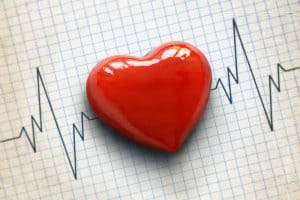The Cardiac Safety Committee convened a 2-day workshop to discuss mechanistic approaches to cardiovascular safety assessment.
Cardiac Safety Committee 2018 Workshop
May 15, 2018 – May 16, 2018
Boston, Massachusetts, USA

The mission of the HESI Cardiac Safety Committee is to improve public health by reducing unanticipated cardiovascular-related adverse effects from drugs or chemicals, and to develop innovative approaches to support early detection and prediction as well as improved understanding of cardiovascular toxicology and pathobiology.
 Cardiac Safety Early Career Seminar Award Series
Cardiac Safety Early Career Seminar Award SeriesThe Cardiac Safety Steering Team is proud to present the second webinar series featuring the 2024 Early Career Seminar Series Awardees.
This competitive award is given to postdoctoral or early career scientists who have compelling research related to cardiovascular safety and risk assessment.
Three awardees were selected for the 2024 Seminar Series:
For webinar link contact: HESI Cardiac Safety cardiacsafety@hesiglobal.org
Past Award Winners
This group is working to understand and characterize use of stem cell–derived cardiomyocytes in cardiac safety assessments. An article that included best practices for use of stem cell cardiomyocytes in cardiac safety assessments was published in Regulatory Toxicology and Pharmacology. A new group is planning a study to explore in vitro assay ability to detect cardiotoxicity.
Leadership Team:
Ksenia Blinova, PhD (US Food and Drug Administration)
Godfrey Smith, PhD (University of Glasgow)
HESI Staff:
Jennifer Pierson, MPH
This working group is dedicated to investigating mechanisms of proarrhythmic risk. They continue to collaborate with the CiPA Initiative and ICH, and recently published its anticipated high throughput systems (HTS) ion channel work. A new subteam is scoping a conduction/ sodium channel paper to discuss the history and challenges surrounding this topic.
A 3-phased project was conducted by the HESI Pro-Arrhythmia Working Group starting with a detailed literature review and followed by a collaborative HESI-FDA database of 150 new drug candidates to evaluate how predictive nonclinical studies are to clinical outcomes.
Leadership Team:
Jose Vicente Ruize, PhD (US Food and Drug Administration)
Jean-Pierre Valentin, PhD (UCB Biopharma)
HESI Staff:
Jennifer Pierson, MPH
This working group has examined the sensitivity within a preclinical species to assess the function of contractility. They continue their partnership with University of Surrey and Imperial College London on a mathematical model to predict blood pressure changes. The Implanted Telemetry Subteam explored the impact of telemetry lead placement in toxicology studies (a collaboration with the Pro-Arrhythmia Working Group).
Leadership Team:
Michael Pugsley, PhD (Cytokinetics)
Sandy Eldridge, PhD (National Cancer Institute)
HESI Staff:
E’Lissa Flores, PhD
This working group is dedicated to investigating preclinical cardiac biomarkers of hypercoagulability induced under a thrombotic state, in both normal and diseased states. A manuscript was submitted detailing a study investigating the effects of doxorubicin in Zucker diabetic fatty rats. A new study is in the planning stages using xenobiotics to induce the procoagulant state and confirm measurements of biomarkers of interest.
Leadership Team:
Eric Schultze, PhD (Eli Lilly & Company)
Marjory Brooks, DVM (Cornell University)
HESI Staff:
E’Lissa Flores, PhD
The Cardiac Safety Steering Team established this new subteam in early 2020 to develop and provide a structured resource for use when identifying compounds appropriate in a planned committee study. Delivery of this publicly accessible database is anticipated by the end of 2022.
HESI Staff:
Jennifer Pierson, MPH
HESI has been awarded a multi-year U01 grant from the US FDA on the “Evaluation of Integrated Human-Relevant Approaches to Identify Drug Induced Cardiovascular Liabilities.” This grant supports HESI in funding and managing novel, in vitro experimental studies to develop targeted mechanistic data to inform drug safety assessment for key cardiac “failure modes.”
HESI received a Broad Agency Announcement (BAA) award from the US FDA to manage a multi-site study on manual and automated patch clamp platforms. The original study included 4 ionic currents (hERG, Nav1.5 peak, Nav1.5 late and Cav1.2) and 14 compounds and has been expanded to include a total of 28 compounds. The project aims to collect additional information on inter-laboratory variability as well as support the FDA in silico model. Learn more about the recommended ion channel protocols and in silico model here.

Associate Director for Program Development & Resourcing
jpierson@hesiglobal.org

UCB

US Food and Drug Administration
Click box below to view full poster
May 15, 2018 – May 16, 2018
Boston, Massachusetts, USA
The Cardiac Safety Committee convened a 2-day workshop to discuss mechanistic approaches to cardiovascular safety assessment.
Frontiers in Toxicology, 2024
This groundbreaking piece from the HESI Cardiac Safety Committee proposes a new alternative approach to preclinical drug safety assessment, using human cell-based models and computational methods to identify human-relevant liabilities earlier in the process.
Preprint, 2024
The Health and Environmental Sciences Institute (HESI) Cardiac Safety Committee designed and created a publicly accessible database with an initial set of 128 pharmacologically defined pharmaceutical agents, many with known cardiotoxic properties.
Journal of Pharmacological and Toxicological Methods, 2023
Members of the HESI Cardiac Safety Committee pooled retrospective data to explore the incidence of spontaneous arrhythmias and effect of telemetry implants in species typically used in safety pharmacology studies.
JoVE Journal, 2023
Editorial published in JoVE by the HESI Cardiac Safety Committee
Toxicological Sciences, 2022
New publication in Toxicological Sciences by the HESI Cardiac Safety Committee shows that nonclinical models used to predict cardiac safety during drug development do not absolutely replicate the clinical conditions; however, best practices can be used to improve the nonclinical assay quality and achieve the ...
Journal of Pharmacological and Toxicological Methods, 2021
The study (Pugsley et al., 2021. Journal of Pharmacological and Toxicological Methods) focused on the effects of high versus low dietary fat on the development of Type 2 diabetes in obese male ZDF rats, including biomarkers to detect early signs of hypercoagulability and vascular injury in the absence of overt thrombosis. Results ...
hesi@hesiglobal.org
Phone: +1-202-659-8404
Fax: +1-202-659-3859
740 15th Street NW, Suite 600
Washington, DC 20005
Sign up for our monthly e-newsletter.